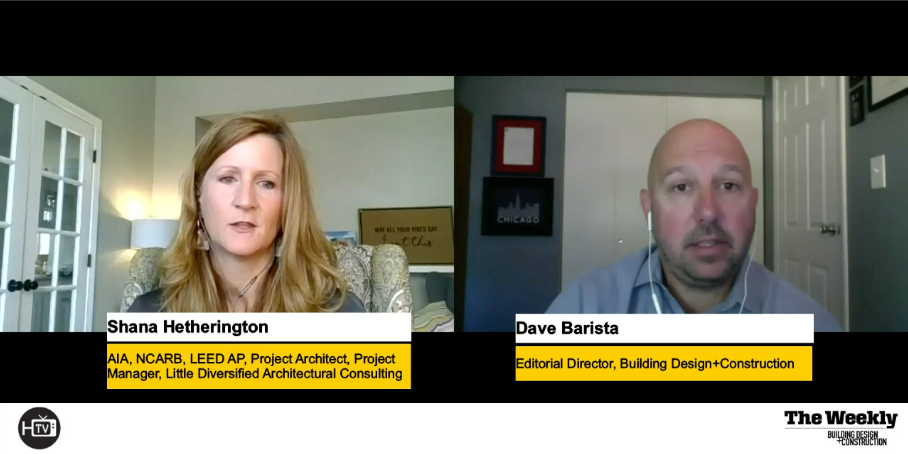This week on The Weekly, BD+C editors spoke with leaders from WSP USA, Perkins Eastman, and Little Diversified Architectural Consulting on three important topics:
• The COVID-19 crisis in nursing homes, and how design can make a difference
• Why and how the commercial construction industry can help drive the U.S. economic recovery
• How school districts are preparing for "back to school" and making long-term changes to school design and operations to promote infection control.
SEGMENT 1: Why and how the commercial construction industry can help drive the U.S. economic recovery, with Lou Cornell, CEO, WSP USA
"I think we can certainly help the economy get back on its feet by doing what we do best. It's about building infrastructure that generates jobs, and makes life better for those that use it everyday. I think engineers will play a vital role in reigniting the economy."
- Lou Cornell, CEO, WSP USA
SEGMENT 2: The COVID-19 crisis in nursing homes, and how design can make a difference, with Bradford Perkins, FAIA, Founding Partner, and Martin Siefering, AIA, Principal, Perkins Eastman
"Even in progressive states, code minimum—which was basically interpreted by the developers back then as the maximum—it's 80 square feet per person, in a semi-private room. Obviously, that, plus nursing units of 40 to 60 residents, means that social distancing, isolation—those things are absolutely impossible."
- Bradford Perkins, FAIA, Founding Partner, Perkins Eastman
SEGMENT 3: How school districts are preparing for "back to school" and making long-term changes to school design to promote infection control, with Shana Hetherington, AIA, NCARB, LEED AP, Project Architect, Project Manager, Little Diversified Architectural Consulting
"How are schools going to be ready? It's a challenge. How do you social distance on a bus? How do you social distance kids coming into schools and in crowded hallways? Classrooms that typically can fit around 22 kids, when you space desks six feet apart, that cuts [the capacity] in half."
- Shana Hetherington, AIA, NCARB, LEED AP, Project Architect, Project Manager, Little Diversified Architectural Consulting
WATCH ‘THE WEEKLY’ EVERY THURSDAY AT 1 PM EASTERN
“The Weekly” is a presentation of Horizon TV, the online broadcast arm of SGC Horizon LLC, publishers of Building Design+Construction, Multifamily Design+Construction, Professional Builder, ProRemodeler, and Construction Equipment.











